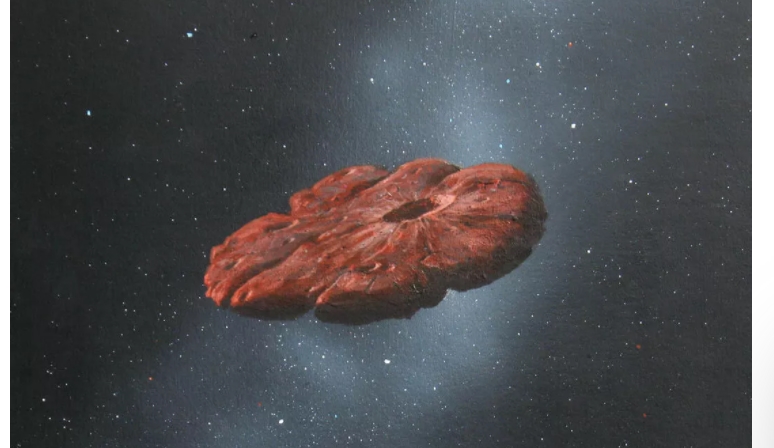Unexplained interstellar visitor Oumuamua could be lost piece of an exoplanet

Oumuamua’s origin has been hotly-debated. A new study proposes it’s an exploded chunk of a Pluto-like planet.
Ever since we were visited by Oumuamua, the first interstellar object we found wandering through our solar system, scientists have been captivated by it. It’s a puzzling cosmic vagabond — so weird that some scientists have even postulated it could be a piece of alien technology (though there’s no real evidence of that.)
A new theory, which appears in two papers published Tuesday in the Journal of Geophysical Research: Planets, posits that the strange object could be an ejected piece of a Pluto-like planet that was blasted out of its home solar system around 400 million years ago.
“This research is exciting in that we’ve probably resolved the mystery of what Oumuamua is,” said Steven Desch, an astrophysicist at Arizona State University and co-author of the new studies. “We can reasonably identify it as a chunk of an ‘exo-Pluto,’ a Pluto-like planet in another solar system.”
Oumuamua (Hawaiian for “scout” or “messenger”) was discovered in 2017 as it rounded the sun on its way out of our solar system. It was observed in October and November of 2017 before it disappeared into the dark.
And it was weird.
It exhibited some strange behavior. Observations suggested it was cigar-shaped, and as it rounded the sun, it gathered a great deal of speed — more than expected — without showing any signs of escaping gas, a telltale marker of a comet.
Read more: Harvard’s Avi Loeb more sure than ever we were visited by alien spacecraft
Desch and co-author Alan Jackson believe that in another planetary system, somewhere in space half a billion years ago, a collision between two cosmic bodies caused an explosive ejection of nitrogen ice. A pancake-shaped block was hurled out from its home and into the space between planetary systems.
In the freezing depths of the cosmos, this solid block of nitrogen would wander, slowly being chipped away by radiation. When it entered our solar system and approached the sun, the nitrogen heated up, giving it a little speed boost, while also producing the cigar-shape that Earth observers noticed. Jackson says the heating would’ve flattened the object, just like how a bar of soap’s outer layers get rubbed off during use.
It’s a neat explanation, accounting for all Oumuamua’s strangeness, and it’s an exciting hypothesis because it suggests Oumuamua is the first piece of an exoplanet that’s visited our solar system.
Oumuamua’s reflectiveness also matched what astronomers have observed on Pluto and on Neptune’s moon Triton, which are nitrogen rich. In a distant young solar system, where bodies were constantly bumping into each other, it’s reasonable to think chunks were thrown for a wild ride through space and that we just so happened to see one passing by.
“We reasoned it was possible that there could have been Plutos in other solar systems with nitrogen ice on their surfaces and a piece of it knocked off could have entered our solar system and explained everything we saw,” Desch said.
And that, he said, puts a dampener on the alien spacecraft theory.
“Everybody is interested in aliens, and it was inevitable that this first object outside the solar system would make people think of aliens,” said Desch. “But it’s important in science not to jump to conclusions.”
So far, scientists have discovered only two interstellar objects. The second, 2I/Borisov, was found in late 2019 and was fairly ordinary by comparison. It was almost certainly a comet, but it did surprise scientists with some unique features.



 Creators of mankind
Creators of mankind Description of “Tall white aliens”
Description of “Tall white aliens” Where they came from?
Where they came from? About hostile civilizations
About hostile civilizations The war for the Earth
The war for the Earth “Tall white aliens” about eternal life
“Tall white aliens” about eternal life Video: “Nordic aliens”
Video: “Nordic aliens” Aliens
Aliens Alien encounters
Alien encounters The aliens base
The aliens base UFO
UFO Technology UFO
Technology UFO Underground civilization
Underground civilization Ancient alien artifacts
Ancient alien artifacts Military and UFO
Military and UFO Mysteries and hypotheses
Mysteries and hypotheses Scientific facts
Scientific facts


















